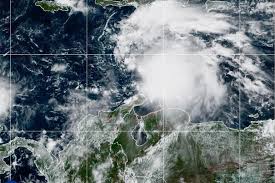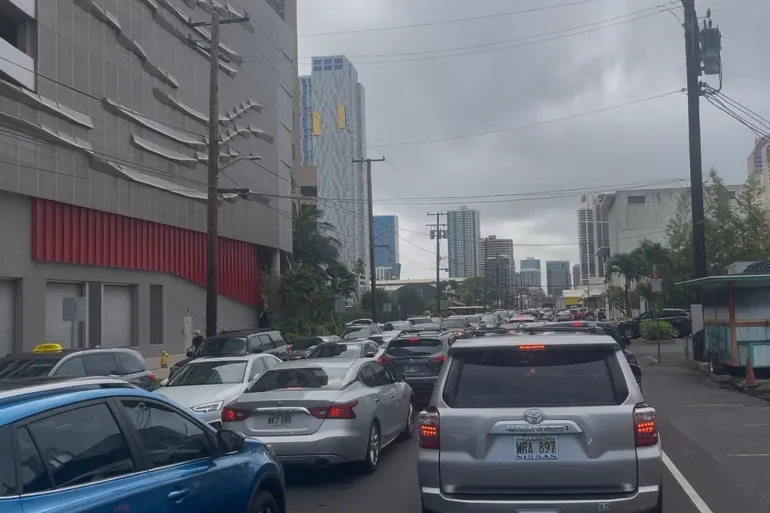Hawaii alert: What is Tsunami and how is it detected? — here’s all to know

Tsunami Warning in Hawaii
Tsunamis are among nature’s most terrifying phenomena. Triggered by sudden disturbances beneath the ocean surface—usually earthquakes, landslides, or volcanic eruptions—they manifest as powerful, fast-moving waves that can travel thousands of kilometers and strike coastlines with little warning. Unlike regular ocean waves, which are generated by wind, tsunamis displace entire water columns, making them significantly more destructive. Nowhere is this threat more real than in Hawai‘i, an island chain located squarely in the Pacific’s “Ring of Fire,” surrounded by seismically active regions capable of sending deadly waves its way. From ancient chants to recent near-misses, the history of tsunamis in Hawai‘i offers critical lessons on preparedness, science, and resilience.
A History Etched in Water: Hawaii’s Tsunami Legacy
The story of tsunamis in Hawai‘i begins long before written records. Oral traditions tell of giant waves that swept across villages, uprooting lives and reshaping coastlines. The first confirmed tsunami to strike the islands occurred in 1812, likely from a distant quake off California. However, it was not until April 1, 1946, that Hawai‘i experienced its most catastrophic tsunami. Originating from an earthquake in Alaska’s Aleutian Islands, the waves reached Hawai‘i in less than five hours, destroying entire communities and claiming 159 lives, many of them schoolchildren. This tragedy catalyzed the formation of the Pacific Tsunami Warning Center (PTWC), marking the beginning of modern tsunami preparedness.
The disaster of 1960, caused by a massive earthquake in Chile, struck Hawai‘i with waves up to 35 feet high, killing 61 people in Hilo and obliterating the Shinmachi district. Other notable events include the 1975 Hilina Slump earthquake, which generated local waves over 40 feet high, and the 2011 Japanese tsunami, which resulted in only minor damage due to improved systems. Each of these events has contributed to Hawai‘i’s deep institutional memory and evolving strategy for tsunami risk reduction.
READ ALSO
Tsunami Warning in Hawaii: What residents should do
Causes and Characteristics of Tsunamis
Tsunamis are primarily triggered by undersea earthquakes, particularly those involving subduction zones where tectonic plates collide. Other causes include volcanic eruptions, like the collapse of a caldera, or underwater landslides, which displace water violently. Once formed, a tsunami wave can travel at speeds exceeding 500 miles per hour in deep water, though it may pass unnoticed by ships due to its low wave height in the open ocean.
As the wave approaches land, it slows down and grows in height due to the shallower seabed—a phenomenon known as wave shoaling. What may have been an imperceptible ripple in the open sea becomes a towering wall of water at the shore. Tsunamis can consist of multiple waves arriving minutes or hours apart, often with the second or third wave being the most destructive. These surges can penetrate far inland, destroy structures, erode coastlines, and kill thousands in minutes.
How Tsunamis Are Detected and Predicted
Thanks to advances in science and technology, tsunami detection today is faster and more reliable. The PTWC relies on seismic monitoring networks to detect earthquakes in real time. If the quake is strong and shallow enough to generate a tsunami, alerts are issued within minutes. Deep-ocean Assessment and Reporting of Tsunamis (DART) buoys, scattered across the Pacific, are equipped with pressure sensors that detect changes in sea level as a tsunami wave passes. This data is transmitted via satellite, allowing scientists to model the wave’s path and predict arrival times with remarkable accuracy.
Alongside oceanic sensors, coastal tide gauges confirm actual wave arrival, enabling authorities to update warnings. Hawai‘i also uses a robust public alert system—combining sirens, radio and television broadcasts, wireless emergency alerts, and social media—to warn residents. These systems are tested monthly and were crucial during recent events, including the 2025 Kamchatka tsunami scare.
Recent Event: The 2025 Kamchatka Tsunami Threat
On July 30, 2025, a massive 8.8-magnitude earthquake struck off the Kamchatka Peninsula in eastern Russia, triggering tsunami alerts across the Pacific. Hawai‘i, among other Pacific nations, responded promptly by issuing evacuation orders for low-lying areas. Sirens blared, and emergency broadcasts urged people to seek higher ground. In Maui, many residents heard tsunami sirens for the first time in over a decade. Fortunately, the resulting waves were relatively small—between 1 and 1.5 meters—but the incident served as a powerful reminder of the constant threat.
Despite no loss of life or significant damage, the response showcased the efficiency of Hawai‘i’s modern alert systems. Authorities were praised for timely evacuations, and the public demonstrated commendable awareness and discipline. Still, experts stressed that even small tsunamis could pose dangers, especially through strong currents, and that the islands must never grow complacent.
Preparedness and Community Resilience
Public education is the cornerstone of tsunami resilience in Hawai‘i. Each April, the state marks Tsunami Awareness Month, holding community drills and school-based simulations. Evacuation maps are published in multiple languages and widely available. Road signs mark tsunami evacuation routes, especially in vulnerable coastal towns like Hilo, Kailua-Kona, Lahaina, and parts of O‘ahu. Schools regularly teach students to recognize natural warning signs—such as sudden sea-level recession or unusual ocean behavior—and to act without waiting for official alerts.
In urban planning, new developments in tsunami inundation zones must meet strict building codes. Essential infrastructure is designed to be elevated or fortified against waves. Parks now occupy spaces where destroyed neighborhoods once stood—such as Shinmachi in Hilo—allowing waves to dissipate without harming lives or property. These adaptations show how lessons from tragedy have shaped a forward-thinking approach.
Global and Climate-Related Implications
Hawai‘i’s vulnerability to tsunamis is not unique; coastal communities across the Pacific, from Chile to Japan, share similar threats. Global collaboration through organizations like UNESCO’s Intergovernmental Oceanographic Commission (IOC) helps to coordinate international alerts and capacity-building. Moreover, climate change adds a new layer of complexity. Rising sea levels could amplify the destructive impact of even moderate tsunamis, pushing water farther inland and increasing inundation depths.
Scientists also warn of low-frequency, high-impact events—so-called “mega-tsunamis”—that might be caused by massive landslides or volcanic flank collapses. While rare, such events could produce waves exceeding 100 meters. Modeling and geological evidence show that ancient Hawaiian tsunamis may have been much larger than modern ones, highlighting the importance of continued investment in risk assessment and long-term planning.
Lessons Learned and the Path Forward
The overarching lesson from Hawai‘i’s tsunami history is that awareness saves lives. In 1946 and 1960, many deaths occurred because people underestimated the waves or returned too soon after the first surge. Today, with better forecasting and education, the focus has shifted to community empowerment and early action. Residents are taught to evacuate uphill and inland immediately upon hearing warnings—or noticing ocean withdrawal—without waiting for confirmation.
Hawai‘i serves as a global model for tsunami preparedness. Its success lies in a combination of cultural memory, scientific innovation, public trust, and coordinated emergency response. However, continued vigilance is essential. As population centers grow and climate patterns shift, the risk landscape will evolve, demanding adaptable strategies.
A Relationship With the Sea, Defined by Respect
Tsunamis are a reminder that while the ocean sustains life, it can also take it away in an instant. In Hawai‘i, the scars of past waves are etched into the land, the laws, and the collective memory. But they are also matched by stories of survival, innovation, and community strength. By honoring the past, embracing science, and preparing for the worst, Hawaiians and coastal populations worldwide can hope to face the next wave not with fear, but with readiness.



